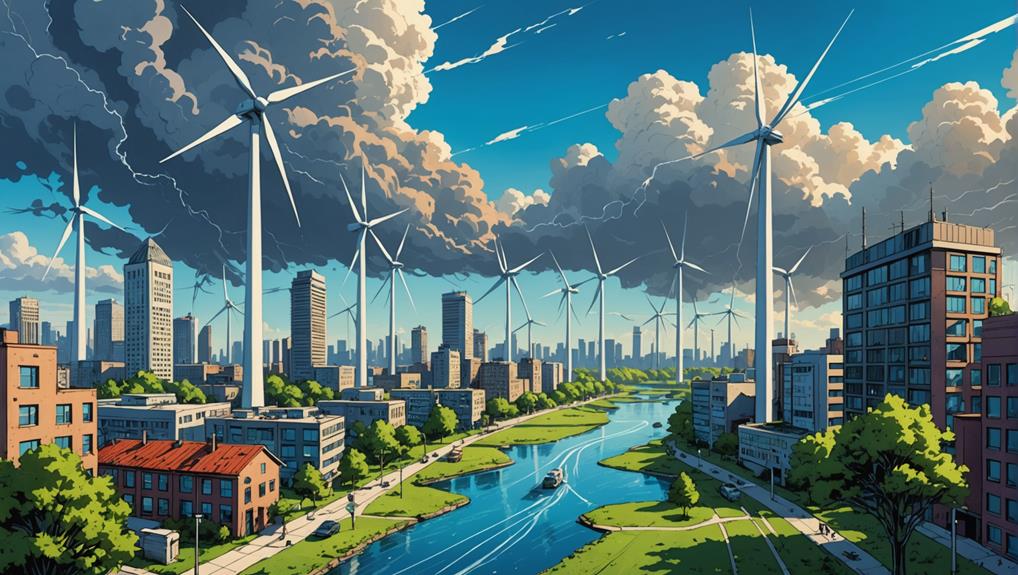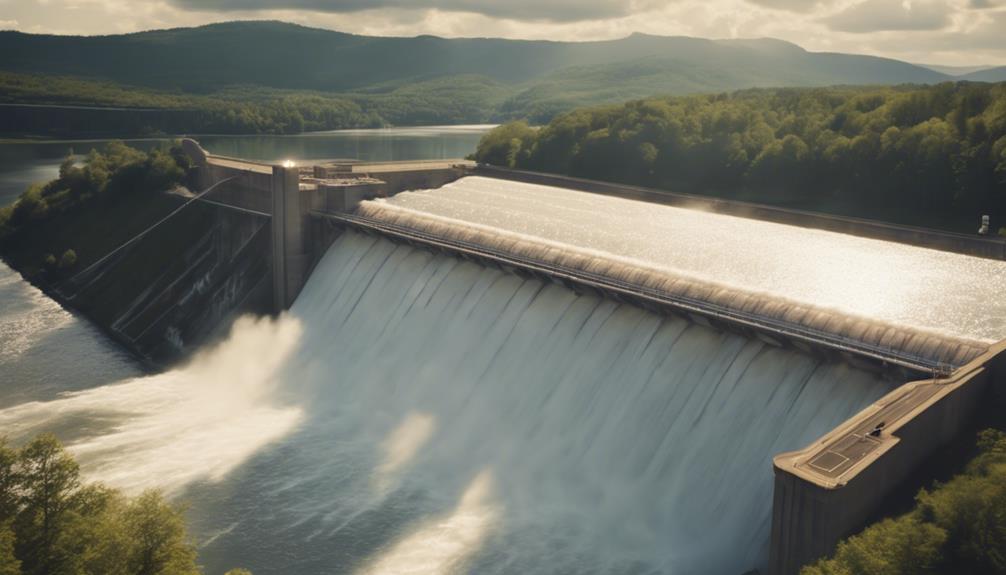Harnessing tornado energy could transform renewable energy, utilizing the immense power of these storms for a greener future. Engineers are exploring methods like controlled tornadoes to generate renewable electricity. Tornadoes store energy within their strong winds, potentially harnessed through innovative technologies such as turbines. Despite challenges posed by unpredictable storms, advancements in capturing storm energy show promise. The vast potential of tornado energy opens doors to a sustainable energy landscape waiting to be explored further.
Key Takeaways
- Tornadoes offer vast renewable energy potential.
- Louis Michaud's Atmospheric Vortex Engine harnesses tornado energy.
- Controlled vortices can power turbines for electricity.
- Artificial tornado technology shows promise for renewable energy.
- Tornado energy could revolutionize the renewable energy sector.
Storm Energy Challenges
Capturing energy from storms presents numerous challenges due to their unpredictable and destructive nature. Tornadoes and hurricanes are powerful forces, releasing vast amounts of energy that could potentially be harnessed for renewable purposes. However, the sheer intensity and erratic behavior of these storms make it difficult to develop storm energy technology capable of effectively capturing and utilizing this energy.
Engineers are exploring innovative methods, such as creating controlled tornadoes, to harness storm energy for renewable purposes. While these experiments show promise, the scale and unpredictability of natural tornadoes and hurricanes present significant obstacles in implementing such technology on a larger scale.
Additionally, storing the excess energy generated during storms is a complex issue due to the extreme levels of energy released during these natural disasters.
Energy Projects Overview
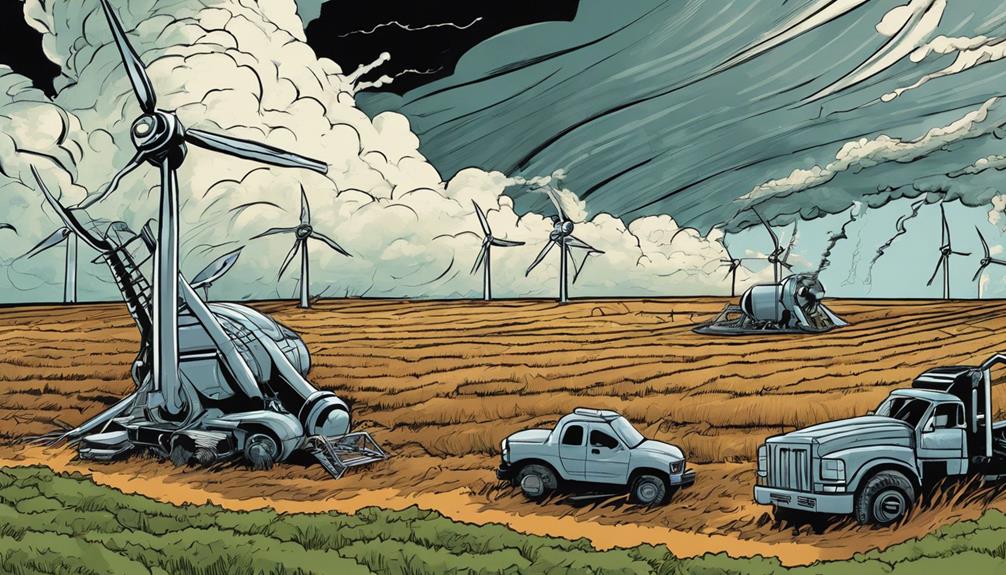
Exploring various energy projects reveals the potential for harnessing storm energy despite the challenges posed by natural disasters' unpredictable and destructive nature. Engineers are experimenting with utilizing small tornadoes as an energy source, drawing inspiration from the immense energy potential these storms possess.
Tornadoes, formed by interactions between warm and cool air, store most of their energy in powerful winds, which could be harnessed through innovative technologies like turbines to generate electricity. While hurricanes release vast amounts of energy due to their reliance on heat and water vapor, their destructive nature and complex energy makeup make them more challenging to utilize for renewable energy projects.
Currently, technology for storing the extreme energy levels produced by storms such as hurricanes and tornadoes remains underdeveloped, highlighting the need for further research and advancements in this field to fully harness the clean energy potential offered by these natural phenomena.
Hurricanes and Energy Capture

Hurricanes' immense energy potential presents a significant challenge for efficient harnessing due to the predominant storage of energy in the form of water vapor. These massive storms release vast amounts of energy, with Hurricane Katrina alone estimated to have released enough energy to power the world for a year.
Despite their predictability, hurricanes remain highly destructive natural phenomena that pose challenges for energy capture. The current technology struggles to capture and utilize the immense energy levels present in hurricanes. One proposed method to harness the energy from hurricanes is through an atmospheric vortex engine.
However, storing excess energy from hurricanes remains a significant challenge due to the extreme nature of these storms. Finding a way to effectively harness the energy from hurricanes could provide a valuable renewable energy source, but it requires innovative solutions to overcome the obstacles posed by the predominant storage of energy in water vapor.
Tornado Energy Potential
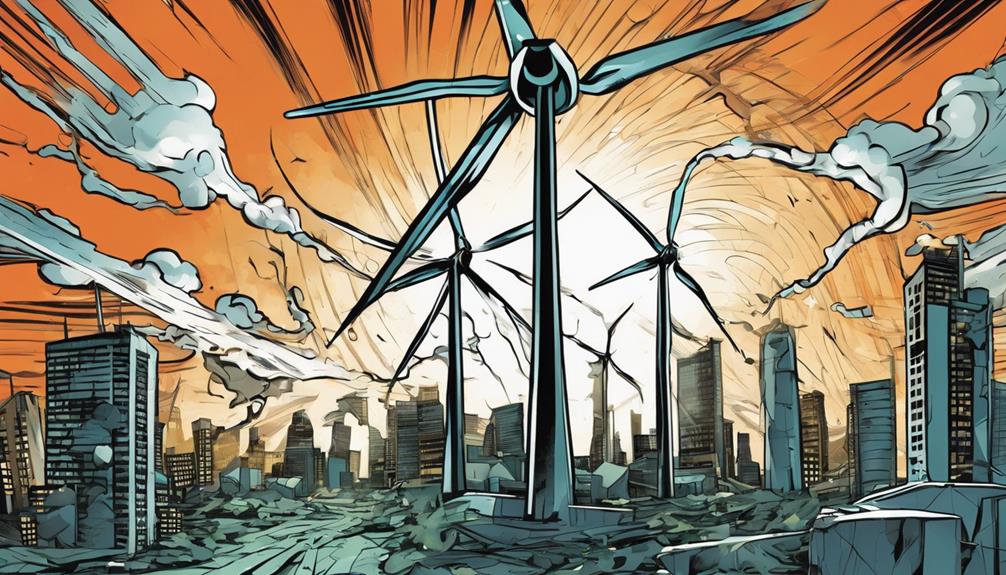
The immense energy potential of tornadoes offers a promising avenue for renewable electricity generation, surpassing the challenges posed by hurricanes' energy storage complexity. A single tornado produces power equivalent to that of a large power station, making it a substantial and untapped energy source.
Louis Michaud, known for his Atmospheric Vortex Engine, aims to harness the energy released by tornado-like vortices for electricity production. The energy generated by tornadoes has been estimated to be 200 times the world's electrical generating capacity, highlighting its vast potential for sustainable energy.
Controlled vortices, similar to those found in tornadoes, present a unique opportunity for innovative renewable energy technologies to thrive. By exploring and developing methods to harness the power of these natural vortices, we could pave the way for a renewable energy future that capitalizes on the immense energy potential of tornadoes.
Harnessing Earthquake Energy

You can explore the potential of harnessing earthquake energy to generate power.
A device has been developed to capture energy during seismic events, although it's primarily used for emergency systems.
The unpredictability of earthquakes presents challenges in efficiently capturing and utilizing the energy released.
Energy From Seismic Activity
Capturing energy from seismic activity presents a challenging yet promising endeavor in the field of renewable energy innovation. Earthquakes release immense amounts of energy, comparable to nuclear explosions, making them a potentially significant energy source. Although a device exists to generate power during earthquakes, it is primarily designed for emergency systems rather than widespread energy production due to the unpredictability and intensity of seismic events.
| Pros | Cons |
|---|---|
| Abundant energy source | Unpredictable nature of earthquakes |
| Potential to supplement renewables | Early stage of technology development |
| Could reduce reliance on fossil fuels | Current devices more suited for emergency systems |
| Opportunity to innovate in energy | Intensity of seismic activity can be a challenge |
| Harnessing untapped natural resource | Complex task requiring advanced technology |
Technology for Earthquake Energy
Exploring the technology behind harnessing earthquake energy presents a complex yet promising frontier in renewable energy research. Earthquakes, known for releasing massive amounts of energy, pose challenges for effective energy capture due to their unpredictable nature. The development of a device capable of generating energy during seismic events shows potential for powering emergency systems, although long-term energy requirements remain a challenge.
To effectively harness earthquake energy as a renewable resource, advanced technology is essential to capture and utilize the immense power released during seismic activities. The current technology for earthquake energy capture is in its early stages, requiring significant advancements for practical implementation in mainstream energy production.
Despite the complexities involved, delving into earthquake energy as a renewable resource could pave the way for a sustainable energy future. By overcoming the obstacles through innovation and technological progress, we may access a valuable source of renewable energy to contribute to a cleaner and greener world.
Ocean Waves for Energy Capture
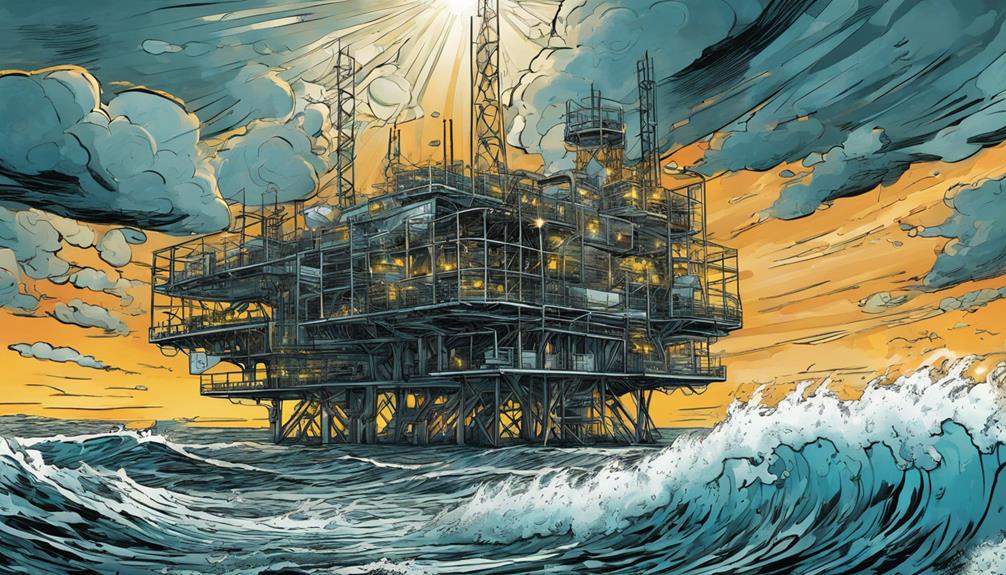
Utilizing buoys designed to withstand storm events, ocean waves are harnessed to generate electricity efficiently. These buoys are strategically placed to capture the immense power of the waves, providing a renewable energy source with the following advantages:
- Buoys are designed to withstand the harsh conditions of storm events, ensuring consistent energy production.
- Ocean wave technology has the potential to harness significant amounts of energy from the natural movement of the waves.
- Underwater turbines work in tandem with the buoys to capture energy from the ebb and flow of tides, maximizing power generation.
- The technology shows promise for extracting renewable energy from the storms' path, tapping into a continuous energy source.
- Effective storm turbines must be able to endure strong ocean currents to efficiently capture energy from the waves.
With advancements in ocean wave technology, the potential for sustainable energy generation from the power of the sea is steadily increasing.
Green Energy Innovations

You should consider the latest green tech innovations in energy, focusing on advancements that promote sustainable practices.
These innovations aim to harness renewable sources efficiently, contributing to a cleaner and more environmentally friendly energy landscape.
Stay updated on the latest developments in green energy to understand the potential impact on sustainability efforts.
Latest Green Tech
New green energy innovations are revolutionizing the renewable energy sector with groundbreaking technologies like artificial tornadoes and AI-optimized wind turbines. Engineers are delving into creating artificial tornadoes through the Atmospheric Vortex Engine, mimicking the power of natural vortexes to generate electricity sustainably.
In addition, the inception of the first solar chimney power station in Spain back in 1982 marked a significant milestone in showcasing innovative green energy solutions. Vortex technology presents a promising avenue to harness tornado energy for electricity production, offering a potential renewable energy source.
Ongoing research is focusing on utilizing AI algorithms to optimize wind turbine performance, enhancing energy efficiency levels. Furthermore, the exploration of drone technology for mobile, aerial wind farms is paving the way for efficient harvesting of renewable energy resources.
These advancements signify a shift towards a greener and more sustainable energy landscape.
Innovation in Energy
Louis Michaud's Atmospheric Vortex Engine represents a pioneering development in harnessing wind energy through controlled whirlpools. Inspired engineers are exploring the potential of creating energy from natural swirls, realizing that to expand, natural whirlpool turbines would need a controlled environment akin to a realistic cyclone.
The AVE's innovative approach involves generating a whirlpool using warm, humid air and axial flow turbines, making it compatible with various heat-generating sources. This technology aims to produce significant power while addressing safety concerns through a rapid shutdown mechanism, ensuring emissions are minimized.
However, economic feasibility analysis is essential as capital costs for the AVE may exceed the energy value harnessed. The concept of scaling up tiny whirlpools to create artificial cyclones showcases the promising future of innovative energy production and renewable energy development, pushing the boundaries of what's possible in the domain of green energy.
Future Wind Energy Technologies
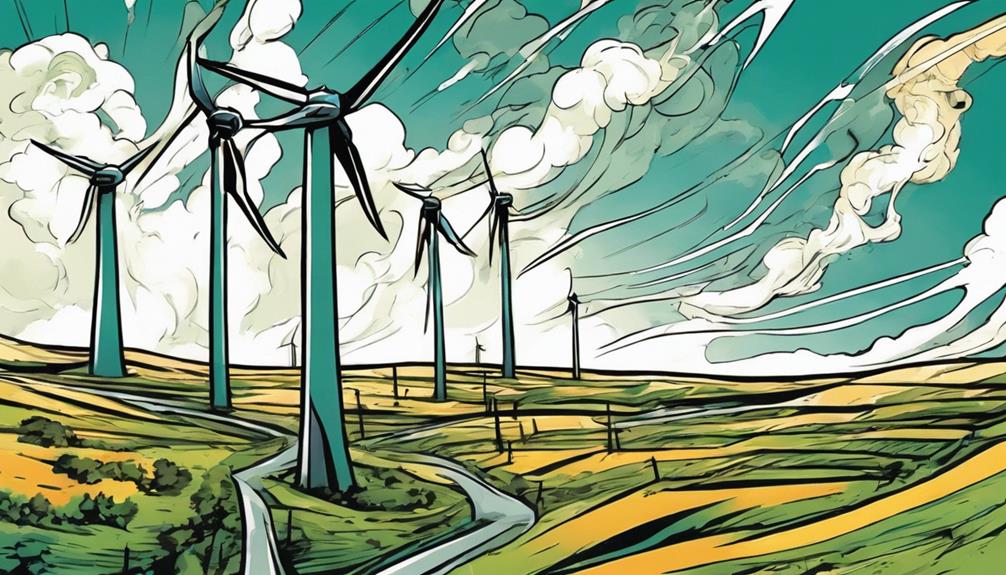
Future wind energy technologies are at the forefront of innovation in the renewable energy sector. Advancements in large-scale turbines, battery technology, and wireless power transfer are shaping the industry's future. Companies are bracing for the challenges and opportunities presented by harnessing the power of natural whirlwinds and warm air currents to generate electricity efficiently.
Turbines would need to be designed robustly to withstand the forces that hurricanes exert, ensuring sustainable power generation even in extreme weather conditions.
- Large-scale wind turbines are being developed to increase electricity generation efficiency.
- Research is progressing in battery technology, like solid-state batteries, to power aerial drones for wind energy projects.
- Wireless power transfer technology is being explored for efficient energy transmission in wind energy systems.
- Ocean energy is seen as a promising solution to address the energy crisis and enhance renewable energy sources.
- Collaboration among experts is essential to tackle multidisciplinary challenges in advancing future wind energy technologies.
Frequently Asked Questions
Can You Harvest Energy From a Tornado?
Yes, you can't harvest energy from a tornado. Harnessing tornado power involves creating controlled vortices to generate electricity. Safety measures are essential to prevent formation. Economic viability and high wind speeds are challenges to overcome.
What Are the Future Predictions for Renewable Energy?
In the future, renewable energy is set to soar. With advancements in technology and global efforts, cleaner energy sources will dominate. You'll witness a greener world as sustainability takes center stage in energy production.
What Would Be the Best Renewable Energy Source for the Future?
For the future, wind energy stands out as a top choice. It's abundant, clean, and sustainable. Harnessing tornado energy could further enhance this renewable source, reducing reliance on fossil fuels and paving the way for a cleaner future.
What Is the Future of Renewable Energy in 2024?
In 2024, renewable energy will continue to grow with investments in wind, solar, and other sustainable sources. Global initiatives and AI integration will drive efficiency, shaping a cleaner energy landscape. Sustainability focus will innovate technology for a greener future.
Can Tornado Energy Also Be Harnessed for Renewable Energy?
Tornado energy is a powerful force that can potentially be harnessed for renewable energy. The immense power of a tornado has the potential to contribute to breaking down wind turbine resources and generating clean, sustainable energy. However, effectively harnessing tornado energy remains a complex and challenging task.
How does Geothermal Electricity Generation compare to Harvesting Tornado Energy for renewable energy?
Geothermal electricity generation techniques involve harnessing heat from the Earth’s core. In contrast, harvesting tornado energy for renewable energy relies on capturing the powerful winds generated by tornadoes. While both methods have potential, geothermal electricity generation is more predictable and doesn’t pose the same risks associated with tornadoes.
Conclusion
So, next time a tornado hits, don't run for cover – run for your energy bills!
With the potential to harness the power of these destructive storms, the renewable energy future is looking brighter than ever.
Who knew that Mother Nature's fury could also be our saving grace?
Stay tuned for more innovative ways to capture natural disasters and turn them into a source of clean, sustainable energy.
It's a whirlwind of possibilities!
